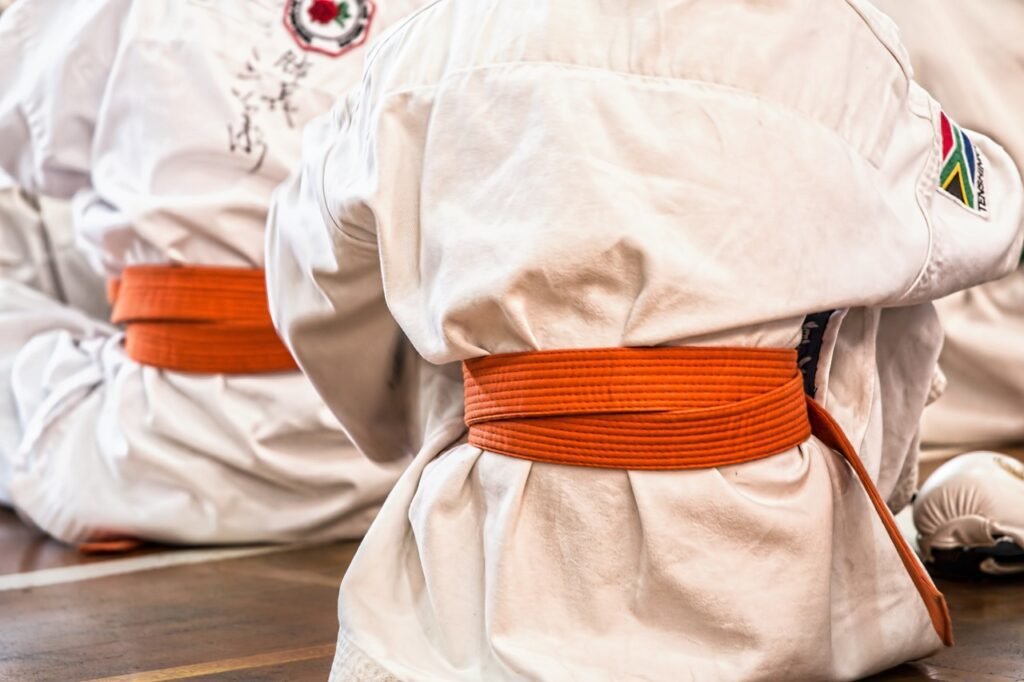Welcome to “Adapting Your Fight Style to Different Opponents,” where you’ll discover how to modify your approach in the ring to counteract various fighting techniques. Whether you’re squaring off against an aggressive striker or a defensive tactician, learning to adjust your strategies is key to success. You’ll gain insights on reading your opponent’s moves, exploiting weaknesses, and keeping them on the back foot. This guide is designed to help you become a more versatile and unpredictable fighter, ready to face any challenge that comes your way. Have you ever found yourself wondering how to adapt your fight style to different opponents? If so, you’re not alone. Many fighters, whether beginners or seasoned pros, grapple with this question at some point in their journey. Adapting your fight style is not just about switching techniques; it’s about understanding your opponent, leveraging your strengths, and mitigating your weaknesses. Today, we’ll dive deep into the intricacies of how you can adapt your fight style to face various types of opponents effectively.

Understanding the Importance of Adaptation
In the world of combat sports, adaptability is paramount. Each opponent you face comes with a unique set of skills, strengths, and weaknesses. Failing to adjust your fight style can result in a swift defeat, no matter how skilled you are.
Why Adaptation Matters
- Maximize Your Strengths: Leverage your key skills against your opponent’s weaknesses.
- Minimize Your Weaknesses: Adapt to avoid areas where you are vulnerable.
- Stay Unpredictable: Changing your style ensures you don’t become predictable.
These factors fundamentally change the dynamics of a fight and can often be the difference between victory and defeat.
Assessing Your Opponent
Before you can adapt your style, you need to understand who you’re up against. This requires a keen eye and a strategic mind.
Key Elements to Consider
| Factor | Importance |
|---|---|
| Size and Reach | Affects distance management and striking strategy |
| Skill Level | Helps estimate the potential difficulty of the match |
| Fighting Style | Determines whether to engage up close or at a distance |
| Cardio Fitness | Indicates how long they can maintain their performance |
| Mental Toughness | Assesses their resilience under pressure |
By evaluating these aspects, you can tailor your game plan to target their vulnerabilities and play to your strengths.
Adapting to Different Opponent Types
Every opponent will test you in unique ways. Let’s explore how you can adapt to some of the most common types of fighters you may encounter.
The Aggressive Striker
Aggressive strikers tend to come forward with relentless pressure. Their objective is to overwhelm you with a flurry of punches and kicks.
Key Adaptation Strategies
- Counter Striking: Use their momentum against them with well-timed counters.
- Footwork: Stay light on your feet and constantly move to avoid being cornered.
- Defense: Keep your guard up and work on head movement to dodge incoming strikes.
Practical Tips
- Jab and Move: Utilize your jab to keep them at bay while moving laterally.
- Clinch: Close the distance and clinch to nullify their striking range.
- Cardio Training: Because aggressive strikers expend a lot of energy, improve your cardio to outlast them.
The Wrestler
Wrestlers aim to take the fight to the ground where they can control and dominate with superior grappling.
Key Adaptation Strategies
- Sprawl and Brawl: Focus on takedown defense and keeping the fight standing.
- Distance Control: Maintain a safe distance to make it hard for them to shoot for takedowns.
- Grappling: Enhance your own grappling skills to counteract their wrestling.
Practical Tips
- Underhooks and Overhooks: Use these to prevent takedowns.
- Knees and Uppercuts: These strikes can deter takedown attempts when timed correctly.
- Drill Takedown Defense: Consistently practice defending against various takedowns.
The Counter Fighter
Counter fighters are patient and look to exploit your mistakes. They thrive on anticipation and timing.
Key Adaptation Strategies
- Feints and Fakes: Use these to draw out their counters prematurely.
- Controlled Aggression: Pressure them without overcommitting to avoid being countered.
- Mix Up Strikes: Keep your combinations varied to make it harder for them to predict your moves.
Practical Tips
- Tempo Changes: Switch the speed of your attacks to throw off their timing.
- Maintain Distance: Don’t rush in; instead, look for openings from a safe distance.
- Leg Kicks: These can disrupt their stance and reduce mobility.
The Balanced Fighter
Balanced fighters are proficient in all areas but may not excel in any one aspect. They are adaptable themselves, making them tough to beat.
Key Adaptation Strategies
- Versatility: Be prepared to switch up your tactics as they adapt.
- Patience: Wait for clear opportunities to exploit their minor weaknesses.
- Study Their Patterns: Recognize repetitive tendencies and capitalize on them.
Practical Tips
- Comprehensive Training: Ensure that your skills are well-rounded.
- Watch Fight Tapes: Study your opponent’s previous fights to understand their habits.
- Situational Drills: Practice drills that simulate multiple scenarios you might face.
Mental Preparation
Physical skills alone won’t win you the fight. Mental resilience and adaptability are just as important.
Visualization
Visualize varying scenarios and how you would adapt your strategy accordingly. This prepares your mind to respond effectively under pressure.
Stay Calm
Maintain composure, especially when your initial plan isn’t working. Adaptation requires a clear mind to assess and implement changes quickly.
Build Confidence
Belief in your ability to adapt and execute is essential. Training with diverse sparring partners can build this confidence.

Training to Adapt
Adaptability doesn’t just happen; it is cultivated through deliberate and focused training.
Sparring with Diverse Partners
Training with a variety of partners with different fighting styles will expose you to multiple scenarios, making you more versatile in the ring.
Drills and Simulations
Perform drills that simulate different types of opponents and situations. This prepares you for quick adaptation during actual fights.
Coaches and Feedback
Work closely with your coaches to get constructive feedback on your adaptability. Sometimes, an external perspective can highlight areas you might miss.
Conclusion
Adapting your fight style to different opponents is both an art and a science. It requires an acute understanding of your opponent, a keen self-awareness of your own strengths and weaknesses, and the training to bring it all together seamlessly. By assessing your opponents carefully and strategically adapting your tactics, you set yourself up for success in the ring. Remember, the best fighters are not those who are the strongest, but those who can adapt and overcome any challenge thrown their way.
So next time you step into the ring, ask yourself: How can I adapt my fight style to exploit my opponent’s weaknesses and maximize my strengths? The answer to that question could be the key to your next victory.


